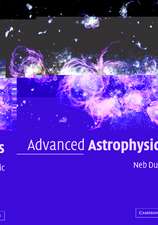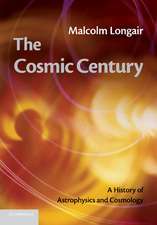Southern Hemisphere Paleo- and Neoclimates: Key Sites, Methods, Data and Models
Editat de Peter Smolka, Wolfgang Volkheimeren Limba Engleză Paperback – 22 aug 2014
Preț: 394.12 lei
Nou
Puncte Express: 591
Preț estimativ în valută:
75.42€ • 80.64$ • 62.88£
75.42€ • 80.64$ • 62.88£
Carte tipărită la comandă
Livrare economică 18 aprilie-02 mai
Preluare comenzi: 021 569.72.76
Specificații
ISBN-13: 9783642640896
ISBN-10: 3642640893
Pagini: 400
Ilustrații: XV, 381 p. 118 illus.
Dimensiuni: 155 x 235 x 25 mm
Greutate: 0.56 kg
Ediția:Softcover reprint of the original 1st ed. 2000
Editura: Springer Berlin, Heidelberg
Colecția Springer
Locul publicării:Berlin, Heidelberg, Germany
ISBN-10: 3642640893
Pagini: 400
Ilustrații: XV, 381 p. 118 illus.
Dimensiuni: 155 x 235 x 25 mm
Greutate: 0.56 kg
Ediția:Softcover reprint of the original 1st ed. 2000
Editura: Springer Berlin, Heidelberg
Colecția Springer
Locul publicării:Berlin, Heidelberg, Germany
Public țintă
ResearchDescriere
Climate models show that climate change is not a uniform process. Areas of increased temperature are situated near areas of decreased temperature, areas with increased precipitation adjoin areas of drought. This is one of the reasons why climate change is so difficult to detect. Any parameter must be considered and tested locally or regionally and not on an average globally. This book gives an overview of current research methods and results in the different fields of climate research including modelling. In addition, it contains a hemisphere-wide stratigraphic data base with about 80000 species. All paleoclimatic data as well as a state-of-the-art atmospheric circulation model in a PC version are included. So both research and graduate teaching are supported with high-end software running on affordable computers, also in those countries that have no access to Cray super computers. Thus, this book will be of interest to all researchers and scientists in the field of climatology.
Cuprins
1: Methods.- Neural Network Analysis of Time Series: Applications to Climatic Data.- One-Dimensional Hydrodynamic Flow in Complex Networks: State of the Art,Some Applications and Generalizations.- Dendroclimatology: A Southern Hemisphere Perspective.- The Chemical History of the Atmosphere: Self-Organizing Processes and Biological Consequences.- Magnetic Signatures of Pampean Soils, A Case Study.- Pole-Equator-Pole Paleoclimates of the Americas: PEP 1 A Review.- 2: Historical and Modern Climates.- Archival Evidence for some Aspects of Historical Climate Variability in Argentina and Bolivia during the 17thand18th Centuries.- Recent Glacier Fluctuations in the Southern Andes.- Palynological Data Indicating Glacier Growth and Environmental Conditions.- A Hybrid Expert System for the Prediction of Extreme Meteorological Situations such as the Zonda Wind in the Cuyo Region, Western Argentina.- Impact of ENSO Events on the Hydrological System of the Cordillera de Los Andes during the last 450 Years.- Recent Precipitation Trends in Southern South America East of the Andes: An Indication of Climatic Variability.- 3: Quaternary Climates.- The Late Pleistocene in Amazonia: A Paleoclimatic Approach.- Vegetation History and Climate Changes in Africa North and South of the Equator (10° N - 10° S) During the Last Glacial Maximum.- Environmental and Climatic History of the Eastern Kivu Area (D.R. Congo, ex Zaire) from 40 ka to the Present.- Quaternary Climate Changes in Southernmost South America Inferred from Lacustrine Sediments Preserved in Volcanic Maars.- Sedimentary Cores from Mascardi Lake, Argentina: A Key Site to Study Elpalafquen Paleolake.- Quaternary Glacial Sequence in the Rio Mendoza Valley, Argentina.- 4: Prequaternary Climates.- A Worldwide Uniform High-Resolution Stratigraphie Standard with Data for the Neogene and Paleogene.- A new Paleotemperature Transfer Algorithm and its Application to the Reconstruction of Neogene Oceans.- Paleoclimatic Changes during the Paleocene-Lower Eocene in the Salta Group Basin, NW Argentina.- 5: Modeling.- The Eximag System.- Principles and some Future Perspectives of Paleoclimate Modeling.
Textul de pe ultima copertă
Climate change and the impact of climate change will affect societies all over the world. This includes temperature and precipitation changes as well as indirect changes such as shifted vegetation belts. Furthermore, CO2 changes may cause major environmental stress for bacteria and viruses potentially supporting the formation of new species, including pests and diseases.
Thus, as a result of the UNESCO Project IGCP-341, one can obtain:
Regional and large-scale reconstructions and usable data (time series and maps) of greenhouse climates.
Information to compile a set of worldwide uniform high-resolution biostratigraphic data.
Regional studies of altered rainforests in Amazonia and Africa.
Meteorological, historical and dendroclimatological (hemispherewide) studies on recent and ongoing climate changes showing the differential nature of precipitation and temperature change.
Software for river network simulation as well as time-series analysis and prediction (monsoonal rainfall) such as neural networks and chaos detection.
A PC version (Windows NT 4.0) of a large-scale atmospheric circulation model (T42 resolution, 18 vertical layers). This enables meteorological and geological institutions, also in low-budget regions, to run respective simulations, e.g. on a Pentium II/300. One modeled day takes only 35 min.
All data on the accompanying CD (including a large set of worldwide biostratigraphical reference data, paleotemperature data and back-rotated drillholes) can be accessed easily, independently of the software used.
Thus, as a result of the UNESCO Project IGCP-341, one can obtain:
Regional and large-scale reconstructions and usable data (time series and maps) of greenhouse climates.
Information to compile a set of worldwide uniform high-resolution biostratigraphic data.
Regional studies of altered rainforests in Amazonia and Africa.
Meteorological, historical and dendroclimatological (hemispherewide) studies on recent and ongoing climate changes showing the differential nature of precipitation and temperature change.
Software for river network simulation as well as time-series analysis and prediction (monsoonal rainfall) such as neural networks and chaos detection.
A PC version (Windows NT 4.0) of a large-scale atmospheric circulation model (T42 resolution, 18 vertical layers). This enables meteorological and geological institutions, also in low-budget regions, to run respective simulations, e.g. on a Pentium II/300. One modeled day takes only 35 min.
All data on the accompanying CD (including a large set of worldwide biostratigraphical reference data, paleotemperature data and back-rotated drillholes) can be accessed easily, independently of the software used.
Caracteristici
New insights into the different reasons and effects of climate change















